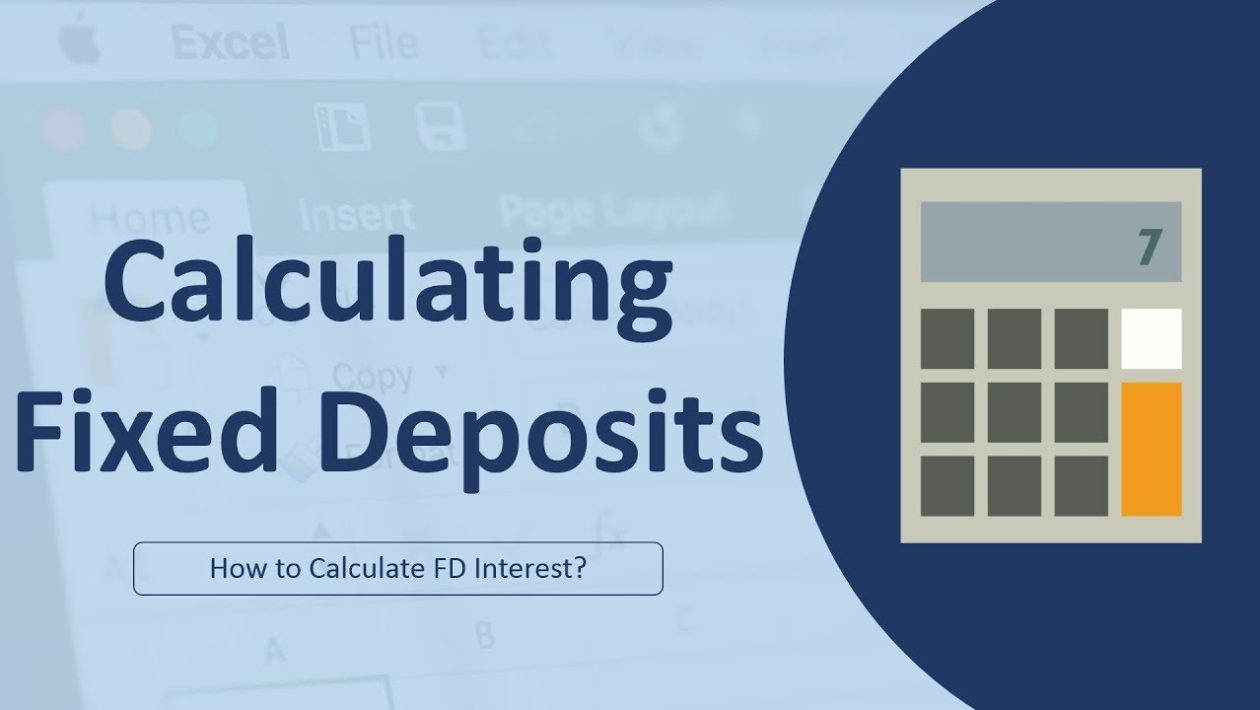Fixed deposits are one of the safest most investment options offered by both government-backed and private financial institutions; these help customers save funds while gaining interest for a defined period of maturity. Because of the assured returns along with other benefits, customers prefer it as an investment option.
The preference is evident as the contribution of fixed deposits amongst all forms of deposit stood at 57.7% in the fiscal year 2017-18 as per the statistical returns released by Reserve Bank of India.
With such secured investment options, it becomes essential for customers to know how to calculate interest rate so that they can compute returns expected from the investment and plan their finances better.
Variables needed for interest calculation
Financial companies let customers invest in fixed deposits and offer them interest on the amount deposited for a period. Interest can either be availed periodically by the customer or can be acquired post the maturity period of a fixed deposit.
In both cases, the interest pay-out calculation depends on certain variables, as mentioned below –
- Deposit amount – Principal amount or the total amount which is deposited.
- Fixed deposit interest rates – Applicable rate of interest specified by the financial institution which is offered to customers.
- Tenor of deposit – Period (in months) for which the amount is being deposited. The term deposit is matured and can be withdrawn by the customer, or one may opt for renewal after this period has concluded.
The interest calculation can be performed easily with an FD calculator that several financial companies offer on their official website.
How to calculate interest rate pay-out?
As mentioned above, these input variables are needed to calculate the interest pay-out for a particular term deposit. Customers can use a fixed deposit calculator to compute value easily or may go through the conventional calculation approach.
In the case of cumulative fixed deposits, the maturity amount is inclusive of the interest pay-out.
Maturity amount formula –
A = P [(1+r/n) ^ (n*t)]
Where,
- A is maturity amount.
- P is the principal amount or amount of deposit.
- r is a rate of interest.
- n is the frequency of interest compounded in a year (which can be annual, half-yearly, quarterly, or monthly)
- t is tenor of deposit.
For example, a customer plans to deposit an amount of Rs.10 lakh in a cumulative fixed deposit for 3 years. The rate of interest offered to them for the fixed deposit is 8.1% and is compounded annually.
In such a case, the maturity amount will become Rs.12,63,214 based on the formula mentioned above.
Interest pay-out formula –
The interest pay-out for customers can be determined by computing the difference between the maturity amount and the deposit amount.
Interest pay-out = maturity amount (A) – deposit amount (P).
So, the interest pay-out for this example becomes Rs.2,63,214.
For cases of a non-cumulative type of fixed deposit with a tenor of 1 year, interest is calculated based on the simple interest formula.
Interest pay-out = (P x r x t)/100
Where,
- P is deposit amount.
- r is rate of interest.
- t is tenor of deposit.
It should be noted that this calculation is applicable only in situations when the interest pay-out is to be calculated on the principal amount only.
For example, a customer invests a sum of Rs.10 lakh in a non-cumulative fixed deposit for a tenor of 1 year at an interest rate of 7.6%. In this case, the interest pay-out to the customer annually will be Rs.76,000.
This calculation remains valid depending upon the type of fixed deposit account and interest compounding frequency one has chosen. Further, it should also be noted that the premature withdrawal of fixed deposits affects their interest calculation. Premature withdrawal not only alters the maturity amount and interest pay-out but also cause one financial loss as they may have to pay additional penalties and charges.
By knowing how to calculate interest rate, customers will be able to plan their finances better. They will be able to learn the maturity amount and interest pay-out, keeping in mind their financial requirements.
Usually, senior citizens prefer investing in non-cumulative FDs because of higher and assured returns. Performing these calculations will help them determine periodic interest they are seeking or calculate the lump sum amount at the end of the tenor.











